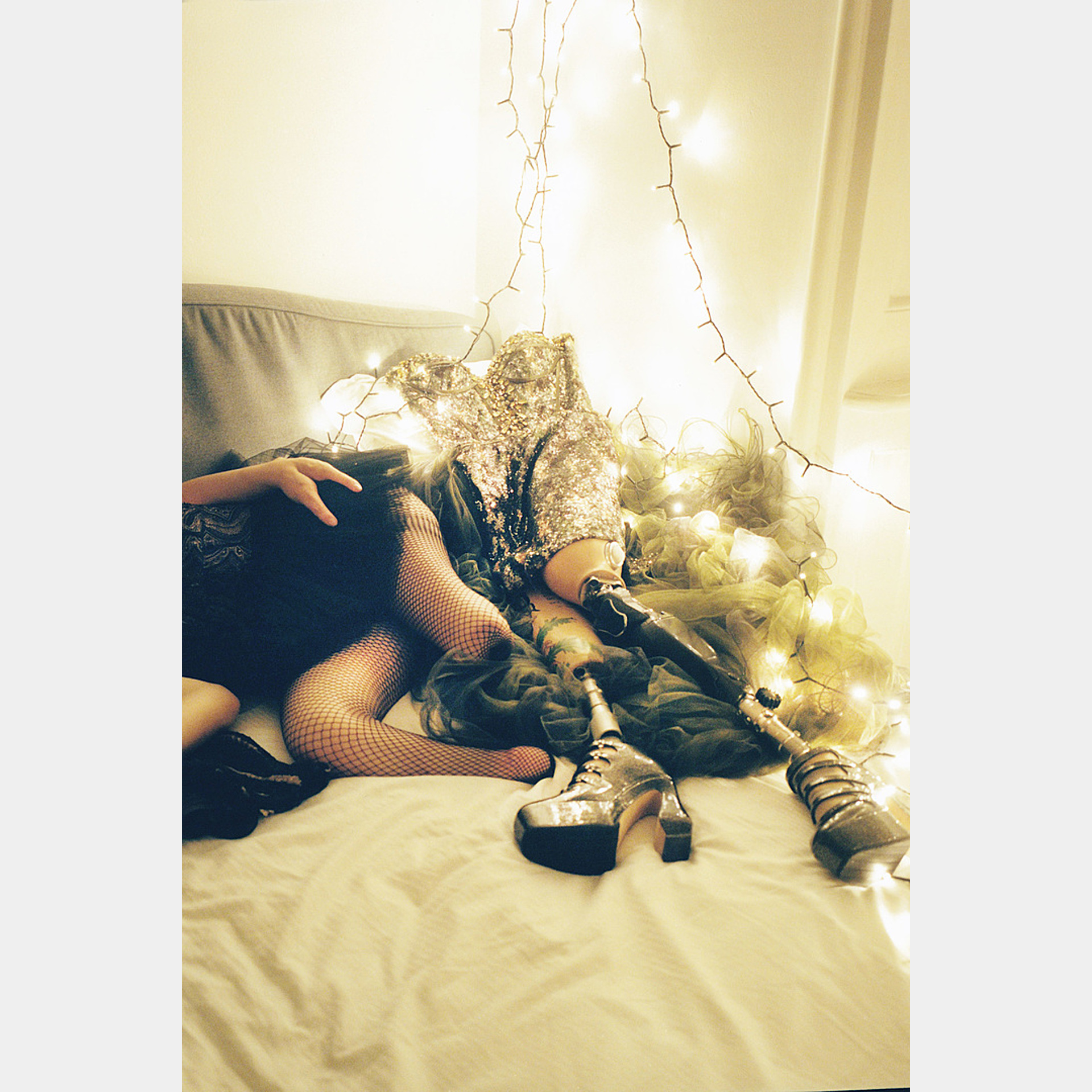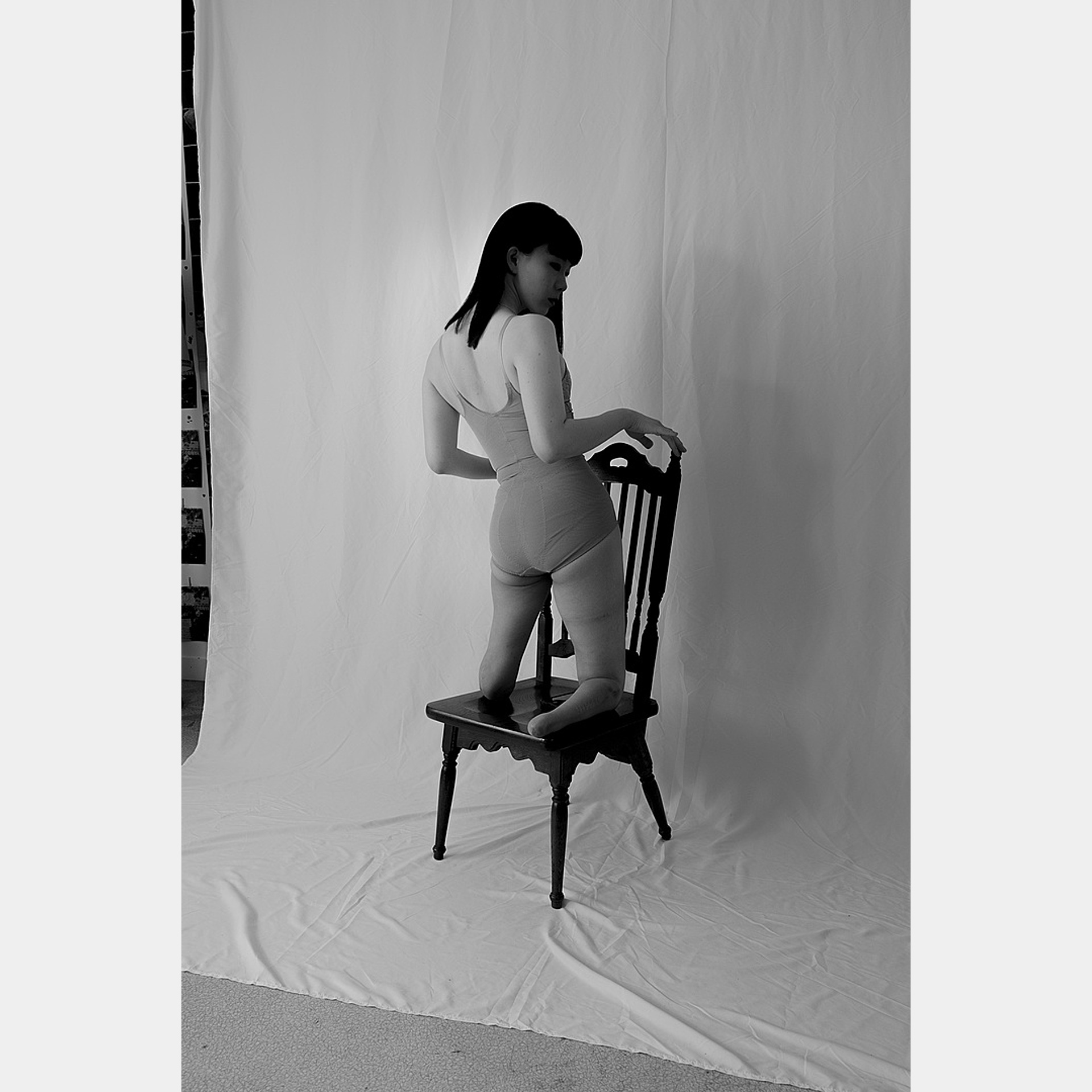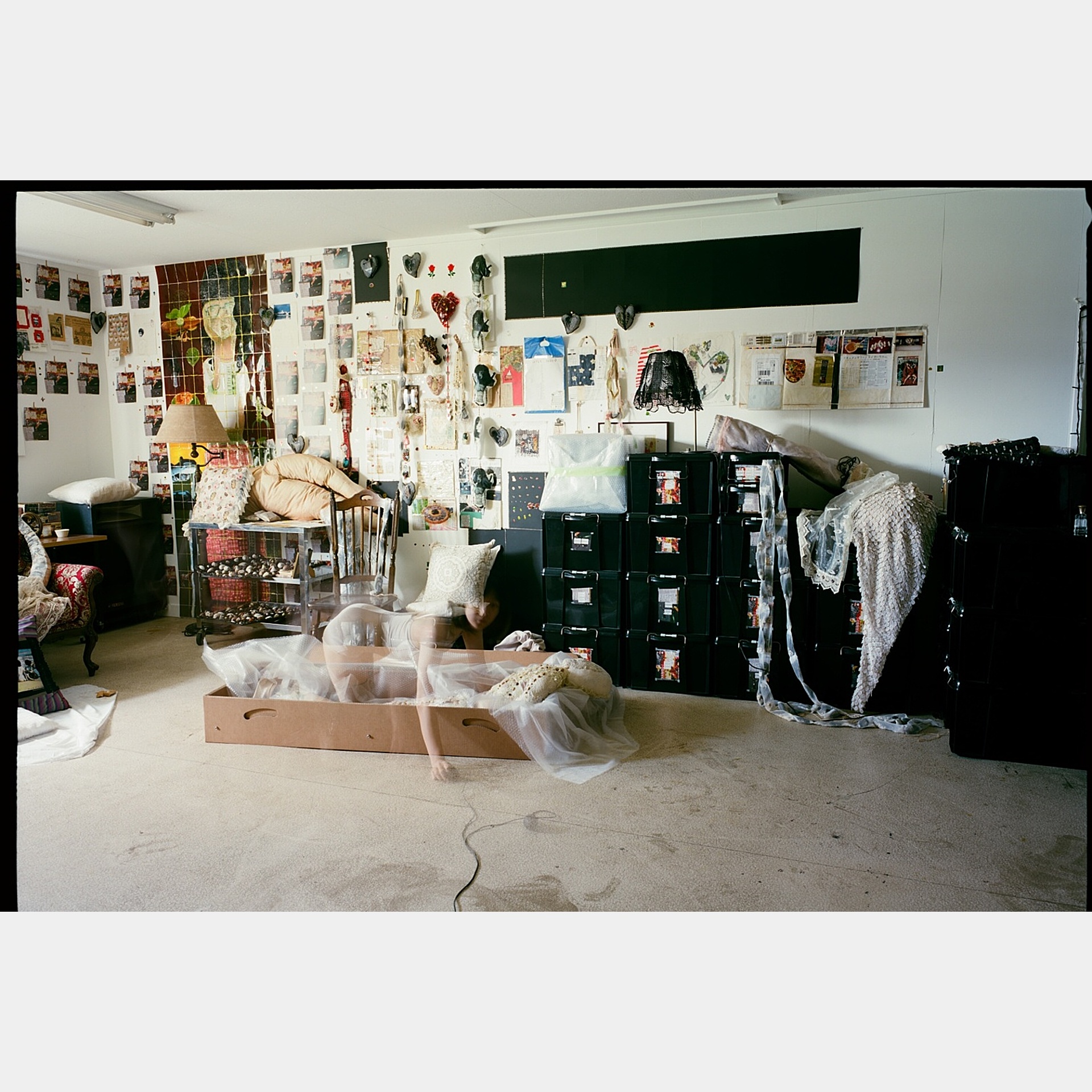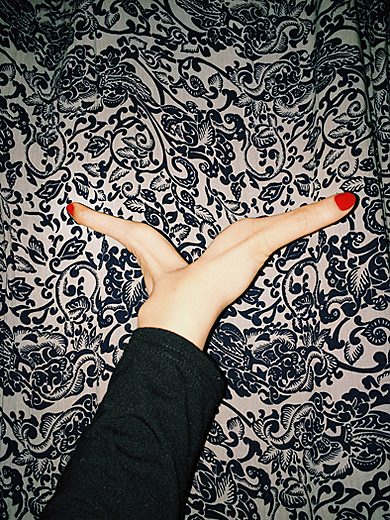Born 1987 in Saitama and raised in Gunma, Japan.
Graduated with a Master’s degree from the Department of Intermedia Art at Tokyo University of the Arts in 2012. Suffering from congenital tibial hemimelia, Katayama had both her legs amputated at the age of nine. Since then, she has created numerous self-portraits, alongside embroidered objects and decorated prostheses, using her own body as a living sculpture. Her belief is that tracing her own self connects her with other people, and that just like a patchwork is made by stitching together edges with needle and thread, her everyday life can also be connected with wider society and the world.
In addition to her creative art, she has also worked as fashion model, singer and keynote speaker at international events. She also leads the “High Heels Project”, which has recently entered its second phase. The motto of the project is to use the body and art in any way possible to achieve “freedom of choice.”
Her major exhibitions include, “home again” (Maison Européenne de la Photographie, Paris, France, 2021), “58th Venice Biennale 2019” (Giardini and Arsenale, Venice, Italy), “broken heart” (White Rainbow, London, 2019), “Photographs of Innocence and of Experience – Contemporary Japanese Photography Vol.14” (Tokyo Photographic Art Museum, Tokyo, 2017), “on the way home” (The Museum of Modern Art, Gunma, 2017), “Roppongi Crossing – My Body, Your Voice” (Mori Art Museum, Tokyo, 2016), “Aichi Triennale 2013” (Nayabashi, Aichi), etc. Public collections include La Maison Rouge (Paris, France), Collection Antoine de Galbert (Paris, France), Mori Art Museum (Tokyo, Japan), Arts Maebashi (Gunma, Japan) and Tokyo Photographic Art Museum (Tokyo, Japan). She received the Encouraging Prize of Gunma Biennale for Young Artists in 2005, Grand Prix of Art Award Tokyo Marunouchi in 2012, Higashikawa Award for The New Photographer category in 2019 and Kimura Ihei Award in 2020. Her major publications include “GIFT” (United Vagabonds, 2019).
- 1987 Born in Saitama, raised in Gunma, Japan
- 2010 B.A., Gunma Prefectural Women's University, Gunma
- 2012 M.F.A., Tokyo University of the Arts, Tokyo



